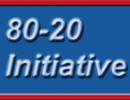对高校入学使用“族裔考量”的最佳批评
8020 PAC-1317 09/22 13024We quote only 370 words from STANFORD MAGAZINE:
THE CASE AGAINST RACE BASED AFFIRMATIVE ACTION
By David Sacks & Peter Thiel
Over the past quarter of a century, Stanford has been discriminating in favor of racial minorities in admissions, hiring, tenure, contracting and financial aid. But only recently has the University been forced to rethink these policies in the face of an emerging public debate over affirmative action.
We are beginning to see why. Originally conceived as a means to redress discrimination, racial preferences have instead promoted it. And rather than fostering harmony and integration, preferences have divided the campus. In no other area of public life is there a greater disparity between the rhetoric of preferences and the reality.
Take, for instance, the claim that racial preferences help the "disadvantaged." In reality, as the Hoover Institution's Thomas Sowell has observed, preferences primarily benefit minority applicants from middle- and upper-class backgrounds. At the same time, because admissions are a zero-sum game, preferences hurt poor whites and even many Asians (who meet admissions standards in disproportionate numbers). If preferences were truly meant to remedy disadvantage, they would be given on the basis of disadvantage, not on the basis of race.
Another myth is that preferences simply give minority applicants a small "plus." In reality, the average SAT disparity between Stanford's African-American and white admittees reached 171 points in 1992, according to data compiled by the Consortium on Financing Higher Education and cited in Richard Herrnstein and Charles Murray's book, The Bell Curve.
The fundamental unfairness and arbitrariness of preferences -- why should the under-qualified son of a black doctor displace the qualified daughter of a Vietnamese boat refugee? -- has led supporters to shift rationales in recent years. Instead of a remedy for disadvantage, many supporters now claim that preferences promote "diversity." This same push for "diversity" also has led Stanford to create racially segregated dormitories, racially segregated freshman orientation programs, racially segregated graduation ceremonies and curricular requirements in race theory and gender studies.
But if "diversity" were really the goal, then preferences would be given on the basis of unusual characteristics, not on the basis of race. The underlying assumption -- that only minorities can add certain ideas or perspectives -- is offensive not merely because it is untrue but also because it implies that all minorities think a certain way. . . . .
To read the remainder of the article, click here.
80-20 fights the fight that you want to fight. So please don't forget to DONATE to SELF, Self Empowerment Long-term Fund. We need make the $350,000/yr for 5 yrs level by 9/30/2014 to win the matching by Woo's Foundation.
S.B. Woo, a volunteer
President, 80-20 National Asian Am. Educational Foundation, Inc.
PS: Lip service & small donations! We are so close to our goal now. We only NEED either 97 individuals to each give $100/yr for 5 yrs, or 10 persons to each give $1,000/yr for 5 yrs, or 1 person to donate $9,750/yr for 5 yrs to reach the $350,000 CHALLENGE! May I count on you? Help keep 80-20 alive. Please DONATE by clicking here.



